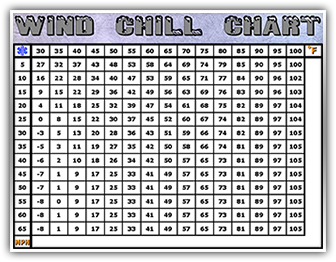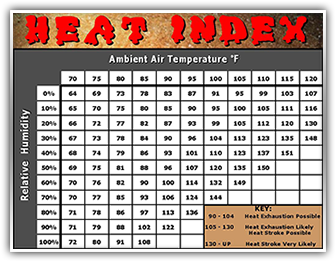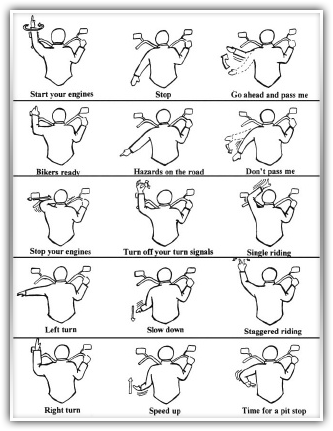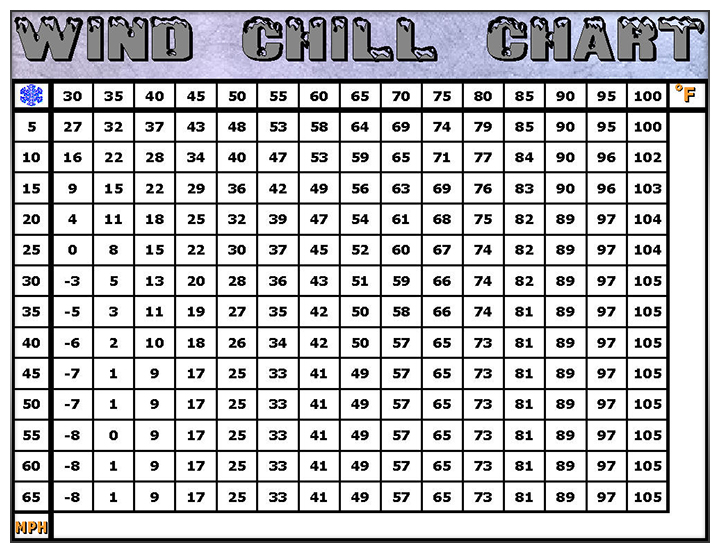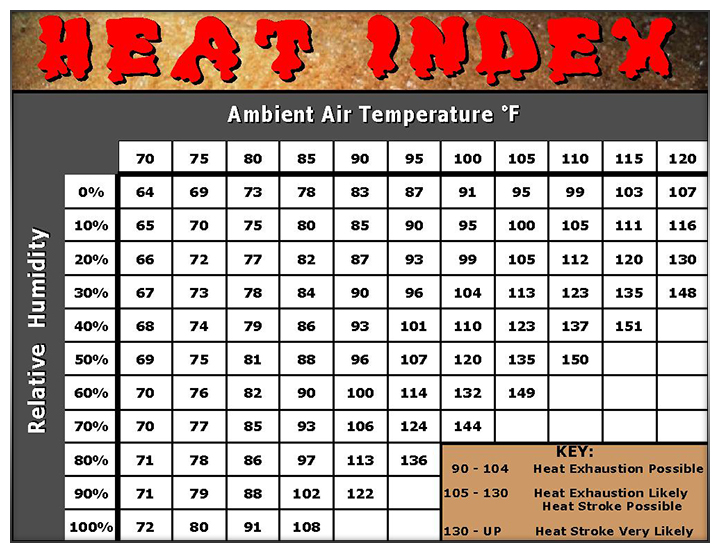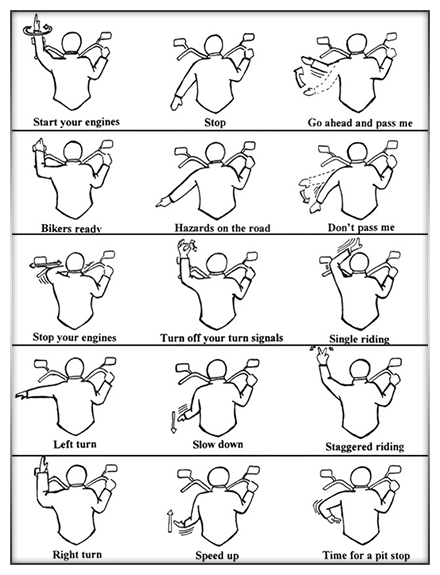HELPFUL HINTS
You've heard it said, "It's not the destination, it's the journey." Well, as motorcycle riders, we pretty much live by that. However, there are times when the destination is as important as the journey. Case in point, the helpful hints and tools on this page are here for your benefit, to help you ride safe and enjoy the journey. It may be a refresher course for some; while for others, it may be a time of discovery, and as such, an opportunity to have some questions answered. So with that, "keep the rubber side down, and the shiny side up." And enjoy the twisties.
Getting Ready For A Ride
You can never be too prepared for a ride. The following list will help you to make sure that both you and your machine are properly prepared, so you can enjoy the ride to its fullest, and be as safe as possible.
Make sure you are well rested and alert before you ride. Fatigue can set in quickly and unexpectedly. Fatigue will significantly reduce your ability to ride safely.
Check your bike before you ride. Here's a helpful list you can use:
Do the headlights, running lights, marker lights, tail/license plate lights and brake lights work?
Do the turn signals work?
Does the horn work?
Are all the fluids at their proper levels and are they clean? Are there any leaks?
Are the mirrors properly adjusted?
Do the brakes work properly?
Are the tires properly inflated and do they have good tread?
Always wear protective clothing such as a helmet, eye protection, gloves, a jacket and/or a long sleeve shirt and chaps. Remember the only thing between you and the road is your protective gear. Speaking of protective gear, the weather is always a big consideration. The wind chill and the heat index charts on this page are provided for you to use as a guide to help determine how you should dress with regards to the weather. The rule of thumb is to always be prepared for changing weather conditions.
Consider hearing protection as part of your protective gear. Traveling at 70mph with a helmet, the decibel level is 100db's. According to OSHA, riding for 2 hours at that level, will cause hearing loss. Continued exposure to those levels can cause permanent hearing loss. There are different types of earplugs available, use whichever one is best for you.
Health issues are a very real risk on the road. Personal health issues or environmental health hazards will affect how you operate your machine. Be aware of the following potential health hazards while riding:
Dehydration - In warm weather, the wind passing over exposed skin will quickly sap the moisture from your body causing dehydration. Wearing a lightweight long sleeve shirt, along with having plenty of water to drink and fruit to eat, will help prevent dehydration.
Hyperthermia - This happens when your body temperature rises sharply. It can occur with prolonged exposure to high temperatures. Keep yourself well hydrated before and during the ride to avoid hyperthermia, which could lead to heat exhaustion and heat stroke.
Hypothermia - This occurs when your body loses internal heat due to wind chill or cold conditions. Riders are especially at risk for rapid chilling. It is essential to wear insulated layers of clothing whenever riding in cold weather.
Remember, dehydration, hyperthermia, and hypothermia will always lead to diminished reflexes, longer response times, and impaired judgment.
Take frequent breaks along the way, especially if you're on a long ride. This will help reduce your level of fatigue and the possibility of injury or health risks.
Know your limits and ride within them. Don't let anyone push you beyond your ability to operate your machine safely. Remember, you don't have to prove anything to anyone. Just be safe, and have fun.
Don't forget that you are nearly invisible to other drivers due to your reduced profile. Drivers of other vehicles are not watching for motorcycles, therefore, they are not likely to see you.
Practice the acronym S. E. E.:
Search for factors that might lead to risky situations.
Evaluate how the factors might interact to create a risk.
Execute an action to maintain a margin of safety.
Emergencies can happen anytime, anywhere and come in any form. Be prepared by carrying a tool kit, a first aid kit, and a cell phone if you have one.
DON'T EVER ride while under the influence of alcohol or drugs (prescription or otherwise). Even some over the counter medications such as those for colds or allergies, can have an effect on your ability to ride safely.
Now that you've taken the time to go through and check everything, saddle up, and have a GREAT ride. We'll see you in the wind.
Packing For A Road Trip
Getting organized and packing your bike for a road trip can be difficult. There's always so much stuff and so little room. In an effort to lessen the frustration level a bit, we have provided some information and a checklist to help you pack your bike more efficiently, for that great adventure you've been looking forward to for so long. So, click on the button below and take a little time to check it out. We think you'll be glad you did.
Check Your Local Weather
Weather plays a major role in deciding when and where to ride. Therefore, it is important to be as informed as possible of the conditions in the area in which you want to ride. With that in mind, we have provided a weather link below, so that you can quickly check the weather, and properly prepare yourself before the ride.
Wind Chill Factor
The two charts below (Wind Chill and Heat Index), are provided to help you to determine what temperature you should suit-up for.
Ever wonder why a certain temperature feels colder at one time, than it does at another? Well, that's usually because of something called the wind chill factor. The wind chill factor is a measurement of how fast heat is being removed from your body. For example: If the air temperature is 50 degrees (across the top), and you are riding at 55 miles per hour (down the left side), it will feel like it's only 25 degrees - which is the chill factor. As you can see, it doesn't take much to make you feel pretty cold and rather stiff. Which by the way, can make it unsafe to operate. So be sure you layer-up.
The longer you are exposed to those kinds of temperatures, the more at risk you become to experiencing hypothermia and even frostbite. So check out the chart; dress appropriately; watch for any standing water, snow, or ice, and have a SAFE ride.
Heat Index
Prevention is the real key, to keep from getting heat-related illnesses while out on the bike. Humidity always plays an important role in how hot the air temperature feels. Just as cold weather is measured by the 'Wind Chill Factor', warm weather is measured by the 'Heat Index'.
As the chart below shows, if the ambient air temperature is 90°, and the relative humidity is 30%, it will feel like 90°. However, if the air temperature is 90° and the humidity is 70% (which happens in some places), it will feel like 106° - and so on. The higher the heat index, the more dangerous it can be.
It's been said, "The faster you ride, the cooler you'll get." Please don't believe that lie. Riding faster will NOT cool you off faster. In fact, what it will do, is dehydrate you faster. So, please be sure to always carry plenty of water and fruit, to help keep you hydrated and nourished on warm days. You may also want to consider wearing a thin long-sleeve shirt. It can really help - on so many levels. As always, check the weather forecast for the area in which you intend to ride, and then check out the chart. Together, this information should help you and your passenger to prepare appropriately. Now, be safe, and have a GREAT ride.
While you are checking out the chart, please don't neglect to check out the "KEY" as well. You just never know, it may help to save your life, or the life of someone else.
Group Riding Basics
The engine purrs beneath you as a string of motorcycles snakes its way through the hills in front of you. With a quick look in the mirror, you see your buddy following close behind with a smile on his face that matches yours. The camaraderie is like no other. That's because, just at this moment, you're all on the same page - and it's great. That's what group riding is all about. It's a wonderful opportunity to share the open road and some of God's best creation, with other like-minded people.
With that, we would like to offer you the opportunity to check out the basic do's and don'ts of group riding. Just click on the button below, and enjoy yourself.
Using Hand Signals
Visibility and communications are essential when it comes to riding. Whenever you're riding with someone else, it's important to know and use basic hand signals. The illustration below, shows the most common hand signals used. If you don't already know them, learn them so that you can communicate effectively when riding in a group. They may save someone's life some day - maybe even your own.
The Wave
If you ride a motorcycle, you are most likely familiar with "the Wave". The wave is a special connection between you and your biker brothers and sisters out on the road - and how cool is that. But is there a special secret to this wave? When you started riding, did you seek out a "wave master" and perhaps copy theirs? Or did you develop one of your own? Have you ever wondered if your wave is appropriate or not? Good questions.
Unfortunately, wave training is not covered in either the basic or advanced motorcycle safety-training course. However, we are going to try and fix that. As a 'public service' for any and all riders, we are about to (with tongue-in-cheek) present a brief look at five of the basic motorcycle rider waves out there. With this, it is our hope that your concerns about proper wave etiquette, will be settled. So, click on the button below, and let's have some fun.
Anti-Theft Tips
Here's something that none of us wants to think about. But unfortunately, motorcycle theft is a very real problem. So to help fight against that, we have provided some relative information, that will give you some very helpful tips on how to keep your motorcycle from being stolen. It doesn't matter what make or model of bike you ride, it can happen to you. So, click on the button below and do yourself a favor, and check it out. We hope you'll find it helpful.
General Information
About Motorcycling
Information is one of the best tools we can have. So to that end, for more information about motorcycling in general, including some videos and such on how to ride safely, etc., please click on the link below. We think what you'll find there, will be extremely helpful.
General Motorcycle Information



